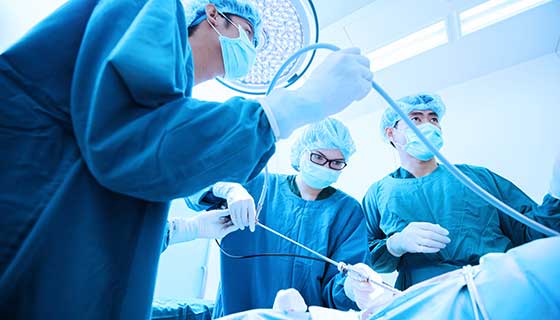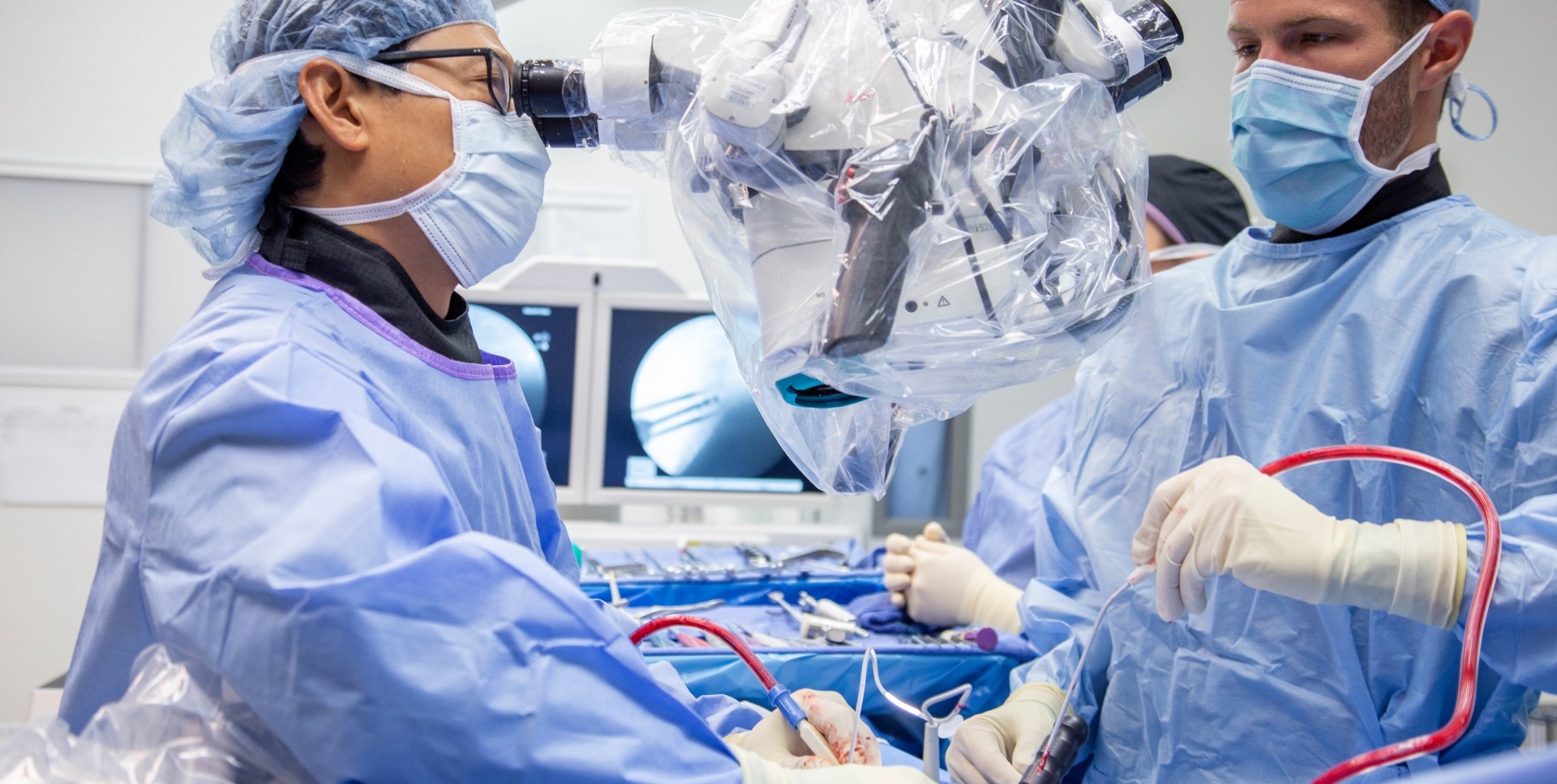Understanding the Common Spine Problems That May Require Surgical Treatment
A detailed understanding of typical spinal column problems that may necessitate medical treatment is crucial for both doctor and clients. Problems such as herniated discs, spine stenosis, and degenerative disc disease not only influence flexibility however can also considerably impair lifestyle. While conventional treatments often provide alleviation, there are circumstances where surgery becomes one of the most feasible choice for bring back function. As we discover the numerous conditions and their implications, it comes to be obvious that the decision-making process bordering medical intervention is diverse and complex, elevating important questions concerning timing, dangers, and outcomes.
Herniated Discs
Herniated discs are a prevalent back problem, frequently arising from age-related deterioration or acute injury. best spine surgeons in st louis mo. This problem takes place when the soft inner product of a back disc protrudes with its external layer, potentially compressing nearby nerves. The resulting signs and symptoms can include localized discomfort, numbness, tingling, or weak point in the arm or legs, depending upon the damaged area of the spinal column
Medical diagnosis generally includes a detailed medical history and physical exam, frequently supplemented by imaging research studies such as MRI or CT checks. These analysis devices permit healthcare experts to examine the level of the herniation and its influence on surrounding structures.
Treatment options for herniated discs range from conventional procedures, such as physical treatment and drug, to more intrusive treatments. Lots of people find relief through non-surgical methods, which concentrate on pain administration and bring back feature. However, when conservative treatments fail to reduce symptoms or when neurological deficits occur, surgical intervention may be warranted.
Surgical options, consisting of discectomy or back combination, objective to ease pressure on the affected nerves and recover spine stability. The decision to seek surgical treatment is typically made after cautious consideration of the patient's total health and wellness, seriousness of symptoms, and feedback to previous therapies.
Spinal Stenosis

Symptoms usually aggravate with activities that require long term standing or walking, bring about a condition recognized as neurogenic claudication. Diagnosis typically includes imaging researches, such as MRI or CT scans, which aid imagine the level of stenosis and determine influenced areas.
Therapy options for spine constriction may begin conservatively, making use of physical treatment, pain management methods, and lifestyle adjustments. When these treatments fall short to provide relief or when neurological deficiencies arise, surgical choices might come to be necessary. Surgical interventions, such as decompression laminectomy or back blend, objective to eliminate stress on the spinal cord and nerves, consequently relieving discomfort and recovering feature. Early intervention is important, as long term compression can bring about irreparable damage and complications.
Scoliosis
A considerable number of individuals are influenced by scoliosis, a problem characterized by an abnormal lateral curvature of the spinal column (best spine surgeons in st louis mo). This curvature article source can develop in numerous kinds, consisting of idiopathic scoliosis, which emerges without a recognized cause, or as an outcome of neuromuscular problems, hereditary variables, or degenerative conditions. The seriousness of scoliosis can differ considerably, varying from mild contours that may not need treatment to severe situations that can result in discomfort, breathing issues, and reduced top quality of life
Diagnosis is typically made via checkups and imaging studies such as X-rays, which aid evaluate the level of curvature and its progression. Therapy options are figured out based on the intensity of the curvature, age of the patient, and possibility for progression. Non-surgical treatments include monitoring, supporting, and physical therapy. Surgical treatment may end up being essential for patients with considerable curvature that is getting worse, or for those experiencing debilitating signs. Surgical alternatives often include back blend, which aims to fix the curvature and maintain the back. Early diagnosis and intervention are important to taking care of scoliosis effectively and reducing prospective difficulties.

Degenerative Disc Illness

DDD is commonly a result of the natural aging procedure, but variables such as genes, lifestyle, and recurring stress can increase its beginning. Clients regularly report local pain in the reduced back or neck, which may emit to other locations, such as the limbs. In extreme cases, nerve compression can cause neurological signs, consisting of tingling, tingling, or weak point.
While conventional therapies, such as physical therapy and discomfort management, can relieve signs for many individuals, some might require medical intervention. Surgical choices, such as back blend or synthetic disc substitute, objective to bring back security and minimize discomfort by dealing with the underlying concerns caused by DDD. A detailed assessment by a back specialist is necessary to determine the most ideal treatment method.
Fractured Backbone
Fractured vertebrae represent a considerable problem in spine health and wellness, usually resulting from trauma, osteoporosis, or various other degenerative problems (best spine surgeons in st louis mo). These fractures can cause extreme discomfort, loss of flexibility, and potential issues such as back instability or neurological deficits. The device of injury normally involves either direct trauma, such as falls or car mishaps, or the progressive weakening of bones because of problems like weakening of bones
Medical diagnosis is generally confirmed through imaging studies, including X-rays, CT scans, or MRIs, which disclose the level and sort of crack. Therapy alternatives differ relying on the crack's severity and the client's general health and wellness. Conservative management may involve discomfort alleviation, remainder, and physical treatment; nevertheless, surgical intervention might be required for displaced fractures, those causing spinal instability, or when conservative actions fall short.
Surgical strategies can consist of vertebroplasty or kyphoplasty, procedures aimed at maintaining the vertebra and alleviating discomfort. In a lot more extreme situations, spine fusion might be suggested to bring back structural honesty. Prompt and suitable intervention is important in ensuring optimum recuperation and lessening long-term complications connected with fractured vertebrae.

Conclusion
In recap, common back issues such as herniated discs, spinal constriction, Your Domain Name scoliosis, degenerative disc illness, and fractured vertebrae can significantly hinder lifestyle and demand surgical treatment. While conservative therapies may give relief in a lot of cases, extreme or persistent signs and symptoms frequently necessitate surgical alternatives to restore feature and reduce discomfort. Prompt diagnosis and ideal management are necessary to enhance individual outcomes and help with recuperation in individuals impacted by these devastating conditions.
Spine constriction is a problem defined by the constricting of the back canal, which can lead to compression of the spinal cord and nerve origins. Surgical treatments, such as decompression laminectomy or spinal combination, aim to eliminate stress on the spinal cord and nerves, consequently alleviating pain and bring back feature. Surgical alternatives, such as spinal combination or man-made disc substitute, aim to restore stability and alleviate pain by attending to the underlying concerns created by DDD. Conservative management may involve pain relief, rest, and physical therapy; nonetheless, medical treatment might be essential for displaced fractures, those triggering spine instability, or when conventional procedures fall short.
In recap, usual back troubles such as herniated discs, back constriction, scoliosis, degenerative disc condition, and broken vertebrae can substantially hinder high quality of life and require surgical intervention.